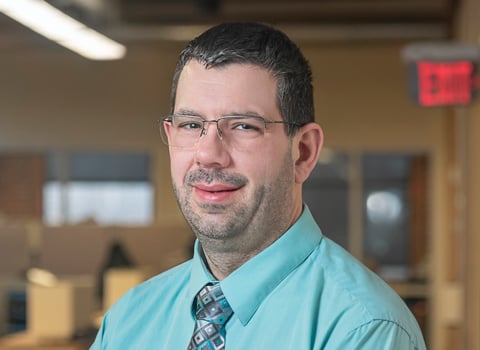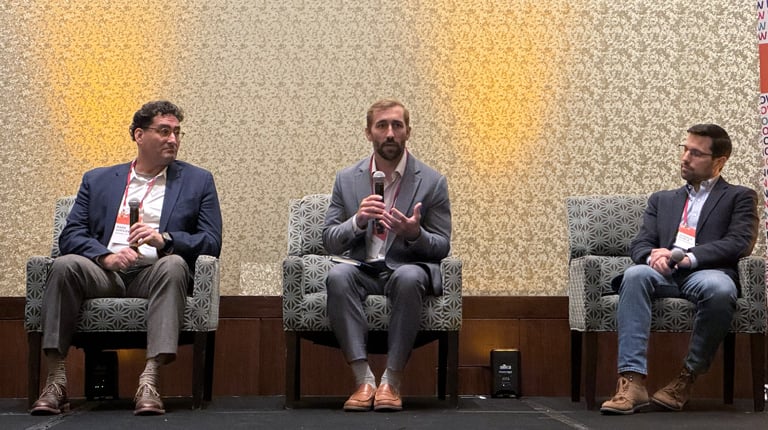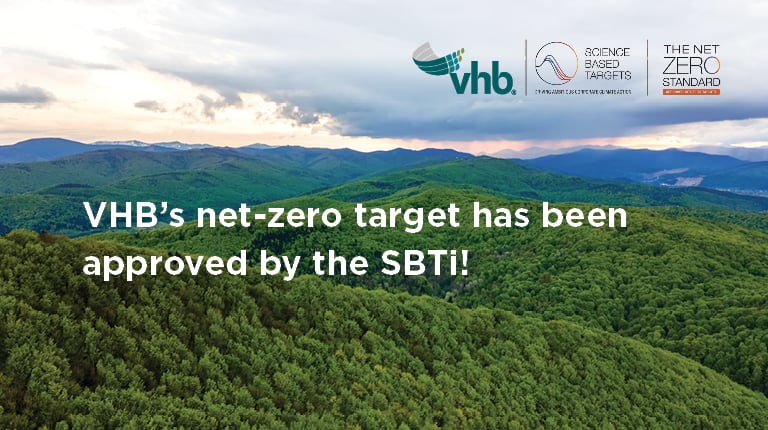
As electrification increases demands on our power grid, electrical engineers are being asked to rethink everything from how energy systems are designed and operated to how they are funded, built, and maintained. Dan Parent, Electrical Engineering Lead at VHB, is working with clients across our footprint to help them address these critical questions. Dan brings more than 20 years of experience from National Grid, where he led teams through substation upgrades, utility coordination, and emergency response.
We sat down with Dan to explore how his background in utility operations informs his approach today, what challenges lie ahead for infrastructure resiliency, and why collaboration is just as important and technical know-how.
VHB: You spent more than two decades at National Grid. How does that experience shape your work at VHB?
Dan: When you work inside a utility, there’s this assumption that everyone understands how electricity gets to their home or business. When I stepped outside that environment, I realized just how misunderstood the system really is. Most people don’t see the complexity behind transmitting and distributing power; they just flip a switch and expect it to work.
This realization has given me a unique lens when I’m collaborating with large electricity users, like major institutions. I can help clients think through how utilities are likely to respond to major loads and plan infrastructure accordingly—well before construction begins.
We’ve already seen success by applying that mindset early in the process. Whether it’s site planning or utility coordination, I work closely with our teams to bring that utility perspective into the conversation from Day One.
VHB: And you’ve worked on everything from substations to emergency restoration. How does that hands-on experience come into play now?
Dan: It helps me see the whole picture. When I look at a new project, I’m not just thinking about the design; I’m thinking about how we’ll build it, how we’ll energize it, and how it’ll be maintained or upgraded 10 years from now.
That mindset helps us ask the right questions early. For example, can this be built safely? Will a utility shutdown impact a critical facility? How do we stage construction to minimize disruption? If we don’t answer those questions upfront, even the best design won’t matter. I’ve always believed that safety starts at the design phase—and that means designing with real-world conditions in mind.
VHB: Has that big-picture approach become more important as the grid gets more complex?
Dan: Absolutely. We’re asking a lot more from our infrastructure than we used to. The grid was originally built to move electricity in one direction: from the power plant to your house. Today, we expect it to handle power flowing in every direction, from homes to vehicles, from businesses to neighborhoods, and even back into the grid.
That shift changes everything. Protection, control, system planning—it all gets more complicated. And with electrification increasing the overall load, utilities have to meet those new demands while still keeping the lights on 100 percent of the time. Add more frequent storms into the mix, and you start to see why reliability is no longer optional; it’s critical.
VHB: So how do we start to meet that demand? What’s going to move the needle?
Dan: First, we need to talk about what’s really required. Right now, utilities navigate complex cases just to fund system upgrades. What we need is a stable, long-term, fact-based investment strategy—10-year plus plans that allow utilities and investors to act with confidence.
Second, we need better technology—automated, self-healing systems that detect and isolate faults and restore service quickly. The good news is, that innovation is happening. We’re starting to see charging stations that function more like substations, with transmission-level connections and on-site battery storage. But scaling that infrastructure will take time and a lot of advance planning.
VHB: Sounds like the road ahead is complex. With so much change happening, what part of this work continues to energize you?
Dan: Honestly, being the person who gets called when something goes wrong. I’ve always enjoyed working through a plan with my team to restore service. That kind of collaboration, where design meets real-word conditions, is what it’s all about.
There’s no single hero in this work. The most successful projects happen when everyone—from engineers to electricians—cooperates and plans early as a team. My role is to help facilitate that thinking, so we’re solving problems proactively together.
Interested in learning more about how VHB supports complex energy projects? Contact Dan Parent today.


